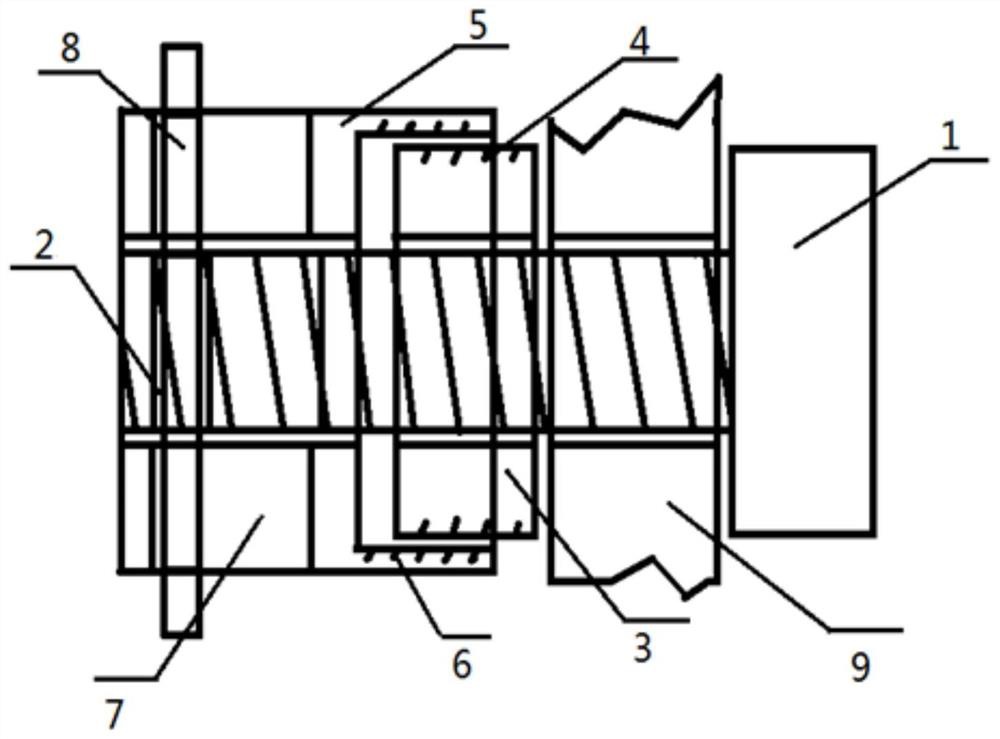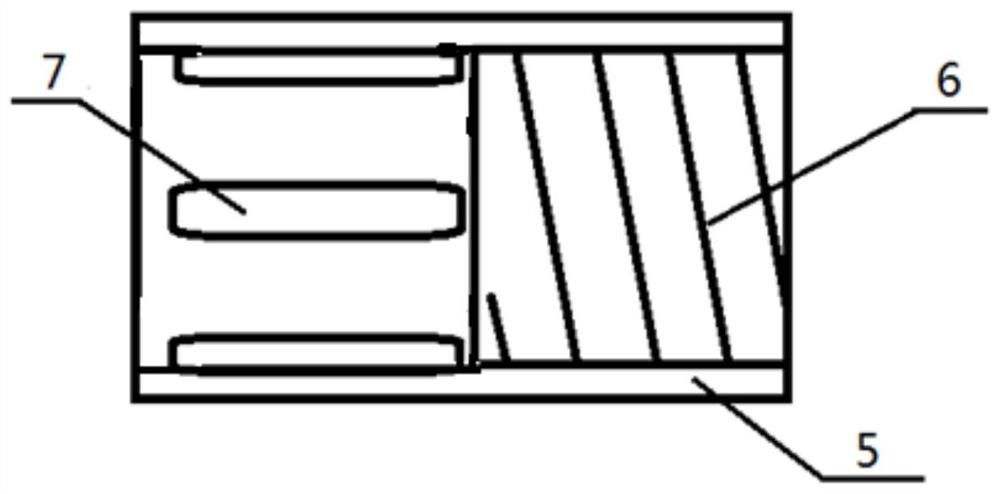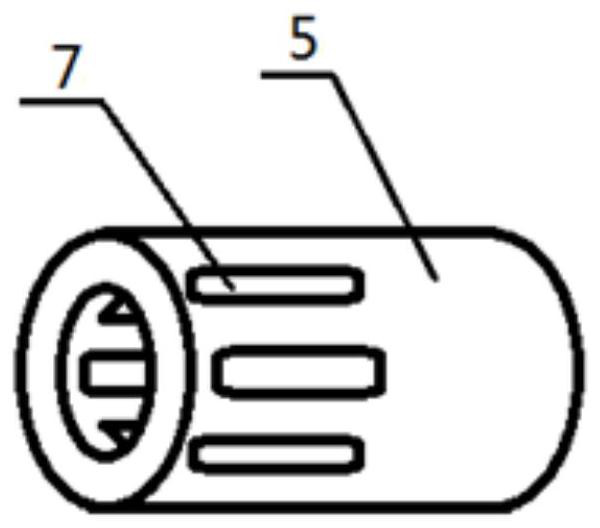Anti-loose screw with double-thread nut
A double thread and nut technology, applied in the direction of nuts, threaded fasteners, screws, etc., can solve the problems of the nut anti-loosening interval becoming smaller, the reverse nut loosening, and the connector cannot be inserted into the connector, so as to reduce the number of accessories. , The effect of preventing the nut from loosening and reducing the accumulation of loose space
- Summary
- Abstract
- Description
- Claims
- Application Information
AI Technical Summary
Problems solved by technology
Method used
Image
Examples
Embodiment 1
[0046] Such as Figure 1-12 As shown, a kind of anti-loosening screw adopting double-threaded nuts includes a screw rod 1, a nut 3 and a sleeve 5; one end of the sleeve 5 is threadedly connected with the nut 3; the screw rod 1 is screwed with the nut 3, and extends To the other end of the sleeve 5, this end is engaged with the screw rod 1 in a movable manner.
[0047] Way of working:
[0048] The screw goes through the fastened part 9 from one side of the fastened part 9, and is threaded with the nut 3. When the nut 3 is screwed into the screw 1 to reach the required position, the sleeve 5 is sleeved on the screw 1 and connected with the nut 3. screwed connection, and then the screw rod 1 is engaged with the sleeve 5 . The snap-fit connection prevents the sleeve 5 from rotating, and the sleeve 5 prevents the nut 3 from rotating, thereby achieving the purpose of preventing the screw from loosening.
[0049] When the fastener 9 vibrates, the fastener 9 transmits the vibrati...
Embodiment 2
[0052] Compared with Embodiment 1, the difference is that: a connection mode of the nut 3 and the sleeve 5 is provided.
[0053] Such as figure 1 As shown, the connection method is screw connection. The assembly and disassembly between the nut 3 and the sleeve 5 can be facilitated, and the sleeve 5 can be prevented from loosening along the axial direction.
Embodiment 3
[0055] Compared with Embodiment 1 or 2, the difference is that: a screw connection structure of the nut 3 and the sleeve 5 is provided.
[0056] Such as figure 1 and 2 As shown, a first thread 4 and a second thread 6 are added; the first thread 4 is provided on the outer surface of the nut 3; the second thread 6 is provided on the inner surface of one end of the sleeve 5; wherein, the sleeve The barrel 5 and the nut 3 are screwed together with the first thread 4 through the second thread 6 .
[0057] Such as Figure 6 and 7 As shown, the outer side of the nut 3 is provided with a first thread 4, and its inner side is provided with an internal thread. Therefore, the nut 3 has double threads, which can apply two different rotational forces to the nut 3 from the inside and the outside at the same time, further improving the nut. anti-loosening effect.
[0058] The outer surface of the sleeve 5 and the thread 3 is threadedly connected; thus, the movable space of the sleeve 5 ...
PUM
 Login to View More
Login to View More Abstract
Description
Claims
Application Information
 Login to View More
Login to View More - R&D
- Intellectual Property
- Life Sciences
- Materials
- Tech Scout
- Unparalleled Data Quality
- Higher Quality Content
- 60% Fewer Hallucinations
Browse by: Latest US Patents, China's latest patents, Technical Efficacy Thesaurus, Application Domain, Technology Topic, Popular Technical Reports.
© 2025 PatSnap. All rights reserved.Legal|Privacy policy|Modern Slavery Act Transparency Statement|Sitemap|About US| Contact US: help@patsnap.com



